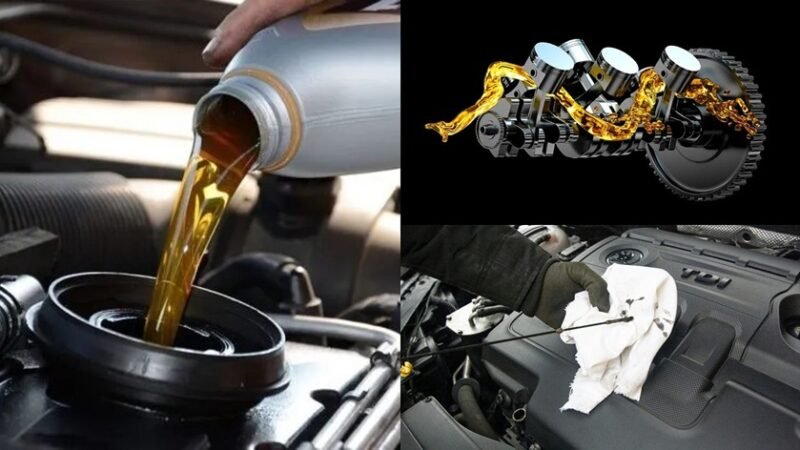How to Choose the Right Tires for Your Vehicle: A Buyer’s Guide

Choosing the right tires for your vehicle is essential for ensuring safety, performance, and comfort. Tires are the only point of contact between your vehicle and the road, making them a critical component of your vehicle’s overall functionality. With a wide variety of tire types, sizes, and brands available, the process can be overwhelming. This guide will walk you through everything you need to know to select the right tires for your vehicle.
1. Understanding Tire Basics
Before diving into the selection process, it’s important to understand the basic aspects of tires:
- Tire Size: The tire size is usually printed on the sidewall of the tire and looks something like this: 225/45R17. The first number (225) represents the tire’s width in millimeters. The second number (45) is the aspect ratio, which is the height of the tire’s sidewall as a percentage of the width. The “R” indicates radial construction, and the last number (17) is the diameter of the wheel in inches.
- Load Index and Speed Rating: The load index indicates the maximum load the tire can support, while the speed rating signifies the maximum speed the tire can safely sustain. For example, a tire marked with “94V” means it has a load index of 94 and a speed rating of V, which corresponds to 149 mph.
- Treadwear, Traction, and Temperature Ratings: These ratings are part of the Uniform Tire Quality Grading (UTQG) system. Treadwear measures the tire’s expected lifespan, traction rates the tire’s grip on wet surfaces, and temperature indicates the tire’s ability to withstand heat.
2. Consider Your Driving Conditions
The environment in which you drive plays a significant role in determining the type of tires you need:
- All-Season Tires: Ideal for drivers who experience moderate climates without extreme winter conditions. They provide a balanced performance in wet and dry conditions and can handle light snow.
- Winter Tires: Designed for severe winter conditions, these tires have deeper treads and softer rubber compounds to maintain flexibility in cold temperatures. They offer superior traction on snow and ice.
- Summer Tires: These are optimized for warm weather, offering excellent handling and performance on both dry and wet roads. However, they can harden and lose traction in cold temperatures.
- All-Terrain Tires: Suitable for drivers who frequently venture off-road. These tires have a more aggressive tread pattern, providing better traction on dirt, gravel, and muddy surfaces while still performing adequately on paved roads.
- Performance Tires: Designed for high-speed and sporty vehicles, these tires offer enhanced grip and handling at the expense of ride comfort and longevity.
3. Tire Longevity and Durability
When selecting tires, consider their expected lifespan and durability:
- Tread Life Warranty: Most tire manufacturers offer a tread life warranty, which is an indication of how long the tire should last under normal driving conditions. A higher tread life warranty generally means a longer-lasting tire.
- Puncture Resistance: Some tires are designed with puncture-resistant technology, which can be crucial if you frequently drive on rough or debris-filled roads.
- Sidewall Strength: Tires with reinforced sidewalls are more resistant to impacts and can provide additional durability, particularly for heavy vehicles or those that tow frequently.
4. Fuel Efficiency
Tires play a significant role in your vehicle’s fuel efficiency:
- Low Rolling Resistance Tires: These tires are designed to reduce the amount of energy required to keep the tire moving, which can lead to improved fuel efficiency. They’re ideal for drivers who want to save on fuel costs over the long term.
- Tire Pressure: Maintaining the correct tire pressure is crucial for both fuel efficiency and tire longevity. Under-inflated tires can increase rolling resistance, reducing fuel economy.
5. Budget Considerations
Your budget will influence your tire selection, but it’s important to find a balance between cost and quality:
- Economy Tires: These are budget-friendly tires that offer basic performance and longevity. They’re suitable for drivers who prioritize cost over high-end performance.
- Mid-Range Tires: These tires offer a good balance of price and performance, with better durability, comfort, and handling than economy options.
- Premium Tires: Premium tires come with the highest price tags but offer superior performance, longevity, and safety features. They’re ideal for drivers who want the best possible driving experience.
6. Choosing the Right Tire Brand
Brand reputation can be a significant factor in your decision:
- Well-Known Brands: Brands like Michelin, Goodyear, Bridgestone, and Continental are known for their high-quality tires and extensive warranties. These brands often invest in research and development to provide innovative tire technology.
- Lesser-Known Brands: Many smaller tire brands offer good quality at a lower price. It’s important to research reviews and ratings for these brands to ensure you’re getting a reliable product.
7. Tire Maintenance Tips
After purchasing the right tires, proper maintenance is essential for maximizing their lifespan:
- Regular Rotation: Tires should be rotated every 5,000 to 7,500 miles to ensure even wear. This helps extend the life of the tires and maintain balanced handling.
- Alignment Checks: Misaligned wheels can cause uneven tire wear, reducing the life of your tires. Regular alignment checks can prevent this issue.
- Balancing: Tire balancing helps prevent vibrations and ensures a smoother ride. It’s usually done when new tires are installed or when you notice any vibrations while driving.
- Proper Inflation: Check your tire pressure regularly, ideally once a month. Proper inflation not only improves fuel efficiency but also extends tire life and enhances safety.
8. When to Replace Your Tires
Knowing when to replace your tires is crucial for maintaining vehicle safety:
- Tread Depth: Tires should be replaced when the tread depth reaches 2/32 of an inch. You can use the penny test to check this: insert a penny into the tread with Lincoln’s head upside down. If you can see the top of Lincoln’s head, it’s time for new tires.
- Age: Even if your tires have plenty of treads left, they should be replaced every six to ten years due to the rubber’s natural aging process. Check the tire’s sidewall for the date of manufacture.
- Visible Damage: If you notice any cracks, bulges, or punctures in your tires, it’s important to replace them immediately, as these can lead to blowouts.
9. Consulting a Professional
If you’re unsure about which tires to choose, consulting a professional can be incredibly helpful. Tire specialists can provide recommendations based on your specific vehicle, driving habits, and local road conditions. They can also ensure that your new tires are properly installed and balanced.

Conclusion
Choosing the right tires for your vehicle involves considering various factors, including driving conditions, budget, brand reputation, and maintenance habits. By understanding these aspects and following the guidelines provided in this buyer’s guide, you can make an informed decision that enhances your driving experience, improves safety, and ensures that you get the best value for your investment. Remember, your tires are a crucial component of your vehicle, so investing time and effort into choosing the right ones is always worth it.
Also, Read More: The Evolution of Car Safety Features





